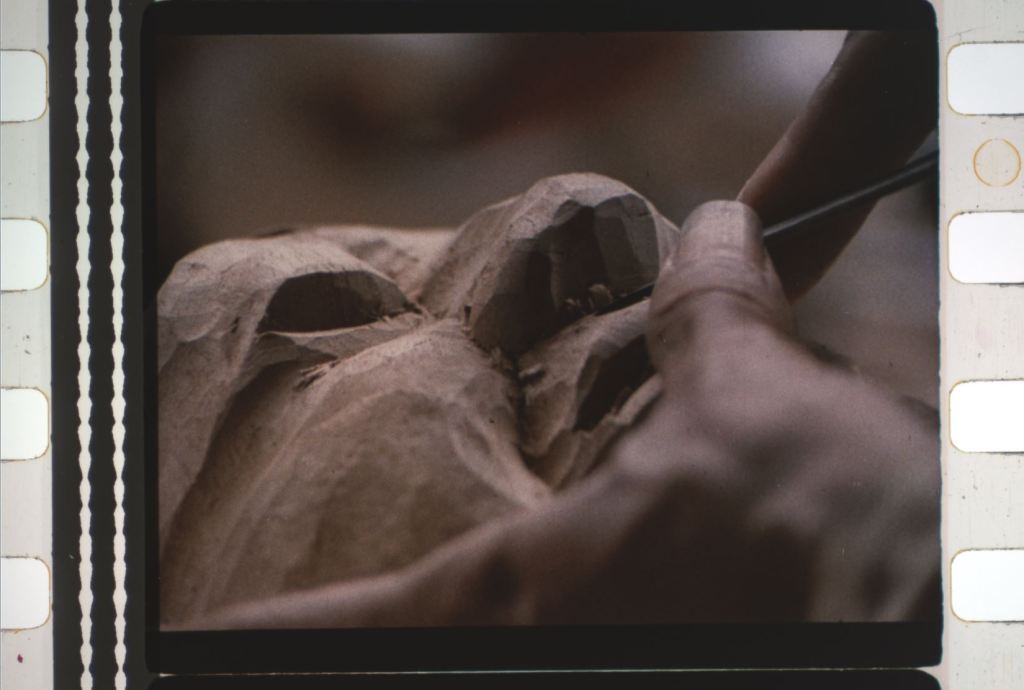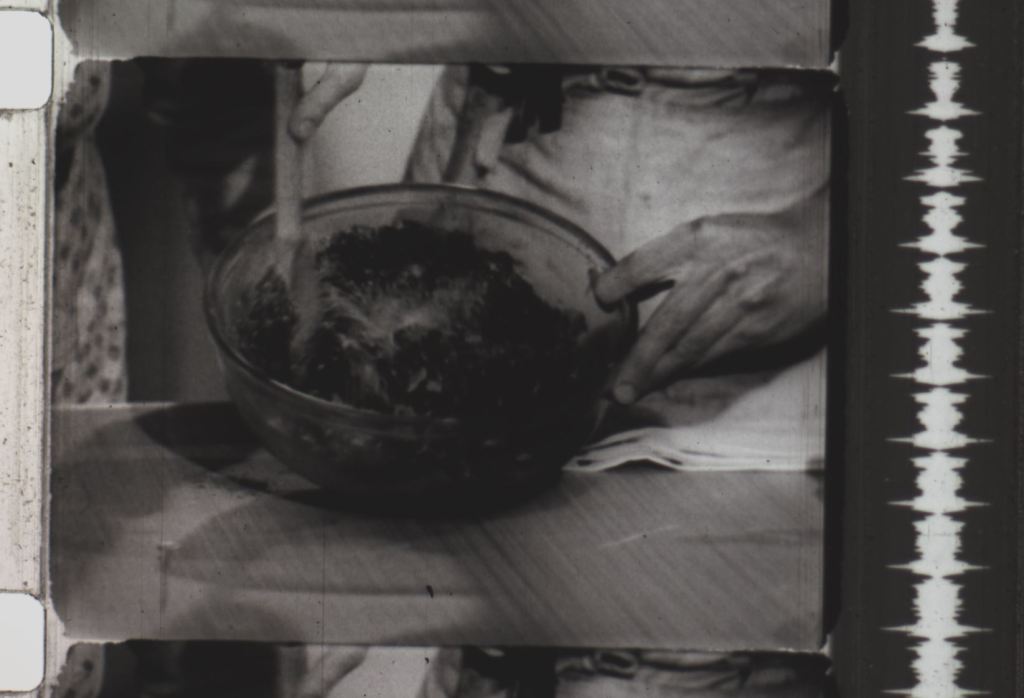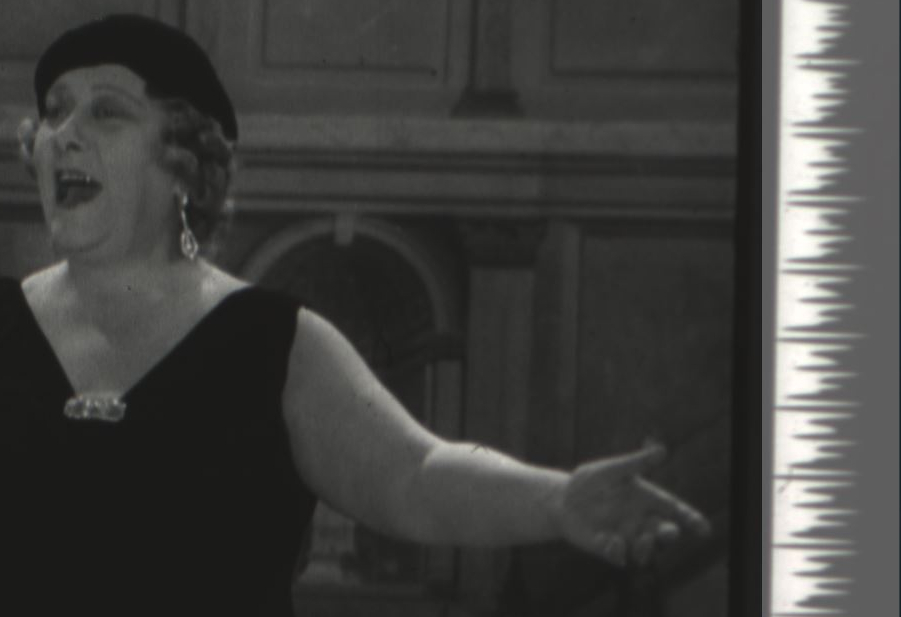Identifying Soundtracks
Magnetic soundtracks
Magnetic sound is an audio tape that is recorded separately to the image. It is either run in parallel with the image (as seen in our video above) this is informally called ‘sep mag’. Or it is applied as a narrow strip onto the edge of the picture element (as you can see in the images of the small gauges 9.5mm and Super 8mm below) this is informally called ‘com mag’. You can recognise it because of its dull brown colour. Unlike optical sound, magnetic audio is not recorded photographically onto the celluloid. As such, if you are preserving a film with a combined mag track you must be careful when repairing joins because the tape can peel off the soundtrack. It’s also important you don’t clean it with alcohol.



As you can see in this picture of a Super 8 film (above left), there is a second, narrower, strip on the right-hand side. This doesn’t carry any audio; it is there purely to balance the film to aid stability as it goes through the projector.
From a preservation point of view, ideally it’s preferable to separate sep mag and image elements because the iron oxide in the mag tracks is known to accelerate any acidic decay in the film, which can lead to vinegar syndrome. (An irreversible breakdown of the whole film also due to poor storage conditions. One of the side effects of which is a strong smell of vinegar).
Optical Soundtracks
The second type of analogue soundtrack is the combined optical, and there are two main types – variable area and variable density. They are often referred to as ‘com opt’. Put very simply, the way to tell the difference between them is that variable area looks like wobbly lines and variable density looks like a bar code of linear marks of varying density. The way I remember it is if you’ve ever seen Disney’s Fantasia and the animations representing the fluctuating pitches of the instruments in the orchestra. There are many different types of variable area, I’ve illustrated a few from our collection below, but if you want to know more about identifying optical soundtracks and restoration, here’s a great website: https://www.endpointaudio.com/optical-sound-detail

separate opt, sometimes we’ll find a film in the vault which looks like it’s just blank, transparent celluloid, but when you look again, you can see that it is in fact a separate soundtrack with an empty picture area. This audio has been recorded separately to the picture. Usually it would then be combined when printed to make the projection or broadcast copy.
Examples of a variety of com opt variable area soundtracks





If you’d like to know a bit more about soundtracks, or simply want a clear introduction to all things film preservation, I would highly recommend the National Film Preservation Foundation’s guide, which you can download chapter by chapter or complete here https://www.filmpreservation.org/dvds-and-books/the-film-preservation-guide-download
